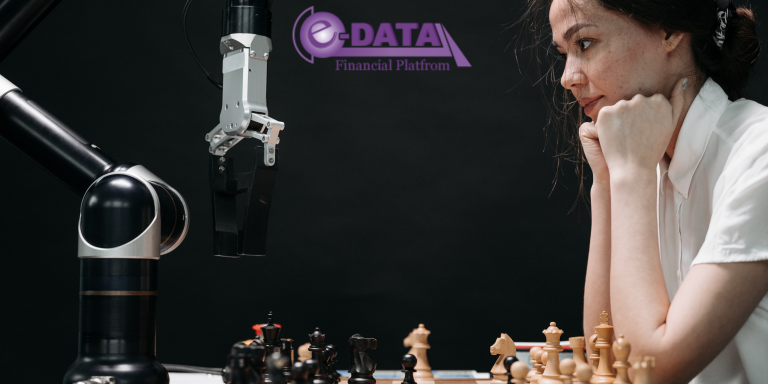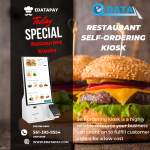Machine Learning and AI Trends to Watch
Perhaps artificial intelligence will allow individuals to be more creative, free humans from complicated or monotonous duties, and even replace humans in hazardous occupations. The advancement of artificial intelligence technology will work hand in hand with the digitalization and intelligent upgrading of the industrial sector, resulting in the construction of a future with virtually limitless possibilities.
So far, the United States of America (USA) has the best artificial intelligence (AI).
In this article post, we will look at the top artificial intelligence software programs available today.
Table of AI Software Contrasts and Differs to look at are:
- #1) Google Cloud Machine Learning Engine (also known as GCMLE).
- #2) Azure Machine Learning Studio (Azure Machine Learning Studio).
- #3) TensorFlow is a machine learning framework.
- #4) H2O.AI (H2O Artificial Intelligence).
- #5: Cortana is a virtual assistant.
- #6: IBM Watson (Information Technology).
- #7: Einstein from Salesforce.
Artificial Intelligence solutions are becoming increasingly popular, and to say that they are a trend would be an understatement. At the moment, the domain is just too large and complex to be considered a monolithic entity. So, what are the most crucial artificial intelligence-related themes to keep an eye on in 2022?
If you were to inquire:
Who is the most successful artificial intelligence company?
IBM
According to market research firm IDC, IBM is the leader in artificial intelligence software platforms, with an 8.8 percent market share in 2019, or $303.8 million in revenue, representing a 26 percent increase over the previous year. IBM is a complex organization that is undergoing upheaval, and artificial intelligence is far from the company’s only development prospect.
Despite the fact that artificial intelligence is not a new technology, its impact is just now beginning to be felt as organizations and individuals become more aware of the possibilities that AI may provide them. Artificial intelligence (AI) is poised to disrupt business in ways never seen before, opening up new opportunities for entrepreneurs, company executives, and workers across all industries.
Artificial intelligence is gradually making its way into our daily lives. It may even become difficult to distinguish between technology and mankind in the near future. What will be the AI trends in 2022, and what will the most recent developments in AI mean for the years to come, is something we should all be thinking about.
Artificial Intelligence is a corporate and industrial revolution analogous to the invention of the steam engine and the introduction of the assembly line, which has completely transformed the way commodities are manufactured and, ultimately, the entire economy. Enhancing the human workforce with technology has an unprecedented impact, including the emancipation of thousands of workers from poverty and the establishment of modern societies, among other things.
Taking this into consideration, it is not surprising that the artificial intelligence market is expected to reach $118.6 billion by 2025, up from $9.51 billion in 2018, representing an increase of nearly eleven times in seven years. According to Markets and Markets study, the compound annual growth rate has accumulated to 36.6 percent over the last five years.
To overcome these issues, business leaders and data scientists must work together to eliminate bias from AI development. Companies can reduce bias in artificial intelligence by evaluating the inputs and making adjustments when necessary. In the case of older women, for example, if a system has been trained on people photos but has no images of them, it may have difficulty recognizing them when presented with their photographs.
In order to achieve such impressive growth, a number of technologies and trends will need to be observed in the forthcoming year, among which are the following.
Artificial intelligence gets down to business.
Several artificial intelligence trends to keep an eye on
The year 2022 will mark the transition of artificial intelligence from the experimental stage to the vital stage. Take a look at the following crucial indicators of a maturing technology.
As enterprise artificial intelligence matures, firms are transitioning to a business-first approach to the technology, and AI benefits are being sought across the organization.
Artificial intelligence has made it into the public eye. Across industries, organizations have successfully implemented proofs-of-concept and have even been successful in putting artificial intelligence into production. Some firms have gone so far as to operationalize their AI and machine learning strategies, with projects spreading throughout the organization and including best practices and pipelines to ensure success. Companies on the front edge of the artificial intelligence maturity curve are now implementing AI at a large scale.
Companies’ perspectives on the strategic usefulness of artificial intelligence — and where they expect to see its benefits realized — are altering as a result of this overall development of how AI is used in enterprises. Here is a look at ten artificial intelligence corporate strategy themes that industry professionals are seeing emerge right now.
Artificial Intelligence technology is evolving rapidly, and it would be meaningless to provide an exhaustive list of all the strategies that are currently available to the reader. That is why we have decided to provide you with the most essential business-related trends to look out for in the coming year.
Chatbots
A chatbot is an ever-vigilant, always well-informed, and always ready-to-assist guy who has an inexhaustible supply of patience to spare. In fact, the ideal customer service or helpdesk staff exists. As a result, a growing number of businesses are incorporating chatbots into their daily operations.
Nearly 60 percent (59 percent, to be exact) of conversational interactions are now facilitated by chatbots. What’s even more surprising is that the chatbot was able to settle 27 percent of cases that were initiated during the conversation with the chatbot from beginning to end.
Even further customization is possible.
A new level of excellence is being achieved in terms of providing a personalized and individualized offer to customers. Companies such as Google, Facebook, and Amazon process a staggering amount of information about their customers’ behaviors and interests.
Netflix serves as an excellent example, where even shockingly unusual tastes such as “a strong female heroine in a romance story” are adequately mapped and parallels between them are discovered and explained. Bringing anything so relevant to the client is impossible without the use of machine learning techniques that can chew through both the customer’s data and the data from the movies (or other content).
Accenture research indicates that up to 91 percent of consumers are more likely to shop with a brand that delivers relevant promotions and recommendations. And in the age of artificial intelligence-powered recommendation engines, this goes far beyond the traditional “tanks for boys, dolls for females” paradigm.
On the dark side of personalization, there are echo-chambers and bubbles created by Facebook and other algorithms that provide a personalized world for the user to interact with and learn from. Another problem linked with artificial intelligence is delivering an algorithm that does not result in the creation of a digital bubble while also giving as much personalization as possible.
Artificial intelligence-driven timing
One thing is to have the appropriate content. The correct place and time, on the other hand, are a whole different story. In the contest for their customers’ attention, companies that manage sniffing not only a product preference but also the appropriate time to deliver a message are well on their way to winning the race.
A excellent example is the delivery of push notifications at a time that is appropriate for the customer’s time zone – there is no point in advertising a customer in the middle of the night if they are not available. He or she will be sleeping or, in the worst case scenario, will be awakened and get enraged at the app that caused the interruption.
In order to identify micro-moments where the user is both engaged and most receptive to information, the AI-powered solution must first analyze the patterns within the user’s behavior. Throughout history, Google has been credited with inventing the concept of micro-moment marketing. As one of the world’s leading artificial intelligence (AI) development companies, Google is also one of the few organizations that has provided the infrastructure and tools necessary to make this paradigm a reality.
It does not appear to be a coincidental association. It’s more of a meticulously crafted artificial intelligence trend.
Search and SEO have been reinvented with the use of a voice assistant.
Because of the increasing popularity of digital assistants such as Siri, Alexa, and Google Assistant, the way individuals seek for fresh information is changing as well. That humanity has invented a fascinating para-language of maybe correct Google queries that is composed of limited syntax and basic phrases intended to stick to keywords is an interesting truth to consider.
As a result, SEO was a two-way street in which the goal was to identify the optimal combination of keywords that satisfied the user’s requirements. And that proved to be difficult at times, particularly in the specialized field of B2B services. The user encountered another difficult situation when he or she had a need but did not know where to look for it.
Things began to shift gradually with the advent of semantic search, but it is voice assistants that will truly redefine the field – and the key to this transformation is the user’s habit of speaking in a natural manner, rather than the search engine tailored para-language.
Taking this into consideration, presenting an SEO strategy might vary substantially, shifting from infusing slightly odd constructions into the text to creating more “speech-like” content to make it more suitable for voice search.
It is possible to give more specific targeting by cherry-picking persons who have a certain accent or speech patterns that represent the education or professional background of the person being interviewed. Although it may seem strange, it is currently a part of our everyday reality – Facebook allows users to target those who observe Ramadan or other religious holidays.

The use of artificial intelligence is becoming increasingly common.
Last but not least, the growing popularity of Artificial Intelligence solutions will be the final and perhaps the most significant trend to watch in 2019. Companies will discover new methods to incorporate machine learning-based solutions into their daily operations and to use artificial intelligence to assist in problem solving. There are as many examples as there are companies out there waiting to figure out how they will use the new technology in their own unique way.
The popularity will manifest itself in two ways. A greater number of end users are using the technology, which is the first of these outcomes. Unbeknownst to them, an increasing number of people will be utilizing artificial intelligence-powered solutions.
Additionally, organizations will notice an increase in earnings as a result of implementing this technology and incorporating it into their regular operations. As a result, today’s elite technology will become a commodity tomorrow, just as it has been with big data and other technologies throughout human history.
Summary
It is simple to assert that artificial intelligence (AI) is the future and that every firm will be impacted. However, this is not the case. Artificial intelligence (AI) is the most significant trend in today’s world, affecting everything. It is a stealthy revolution powered by a slew of artificial intelligence trends that are propelling the most significant shifts in business and society at large.
A thriving machine learning technology is emerging, sprouting both solutions that help all users, such as improved personalization, more personalized information, or a significant increase in the efficiency of business processes, and those solutions that benefit only a small subset of users. However, the same technology is criticized in China as a surveillance tool, and it is projected to bring even more major changes to people’s daily lives as a result of future breakthroughs in artificial intelligence, which is now being developed.
Many technological executives, in my opinion, are still attempting to figure out how artificial intelligence works and how they might apply it to their respective fields. To begin incorporating artificial intelligence, it’s critical to have a clear vision of what you want the AI system to do. It is critical to understand the data you have and what you want the AI system to do in order to be successful.
Particular focus should be paid to the creation of big language models, as these models have made significant progress in recent years and have the potential to completely transform the business. The ability to interpret and respond to language is a critical component of intelligent applications, and it will open the door to new commercial prospects in the coming years.
As more businesses and research groups employ new tools, strategies, and technologies to foster innovation, the adoption of artificial intelligence will continue to expand. Businesses are already implementing artificial intelligence systems to improve business strategies, customer service, market research, advertising, predictive maintenance, autonomous vehicles, video surveillance and medicine, to name a few areas of application.
It opens the door to new possibilities, such as the ability for technology to understand any data and the ability to improve the efficiency of corporate processes. It also brings with it new issues, such as the removal of bias from machine learning. These trends will have an impact on people’s daily lives and businesses all across the world in novel and interesting ways.
AI engineering is the process of automating updates to data, models, and applications in order to streamline the delivery of AI.
When combined with effective AI governance, AI engineering will operationalize the delivery of AI, ensuring that it continues to add value to the organization.
AI and machine learning are merely tools, in the same way that the steam locomotive was merely a tool – a tool powerful enough to reshape all of reality and propel a firm into the new millennium.










